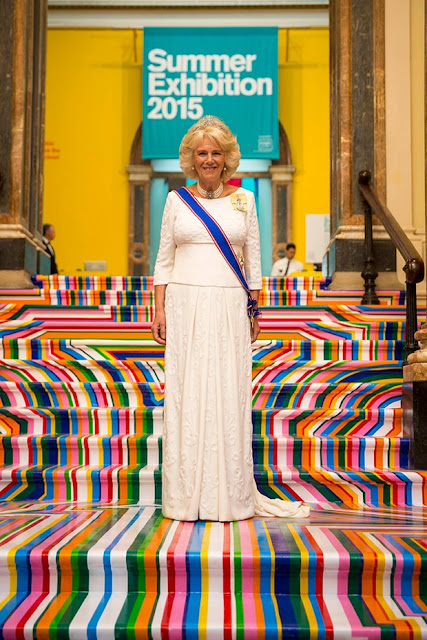FLOWERS GALLERY, CORK STREET, W1S 3LZ
The Picturesque Imperfect
 |
| River Esk, Trough House Bridge, Eskdale, Cumbria 150x122cm. (c) Simon Roberts; courtesy Flowers Gallery |
The dozen or so folk In the photograph above are relishing this beauty spot by the River Esk, and they may have travelled some distance to get there. They are taking advantage of beautiful weather to park their bags and picnics, towels and bottles and occupy the place. What we see is a happy 'family snap', which has been turned into an action photograph. Will that flying young body make a safe landing? It's pure theatre. gripping our attention, and that of half a dozen people above on the balcony/bridge.
 |
| Stonehenge, Wiltshire. (c) Simon Roberts, Courtesy Flowers Gallery |
Here we notice a circle of rather busy people who happen to be surrounding Stonehenge. This small image does not allow you to see the activity clearly: conversations, greetings, groupings, camera at the ready. But the large formal tableau we see before us - and the fact that the picture was taken from a height- sets us at a critical distance from the scene. The notice in the grass reminds us that their progress and route are being benevolently 'managed'.
Visiting Stonehenge early in the day or in the night might be a very different experience. Nearly 200 years ago (1833) the poet William Wordsworth visited another favourite beauty spot, the Cave of Staffa (known to music lovers as Fingal's cave). His response has a contemporary ring:
We are, but surely, in the motley crowd,
Not One of us has felt the far-famed sight;
How could we feel it? Each the other's blight,
Hurried and hurrying, volatile and loud.
 |
| Mullion Cove, Lizard Peninsula, Cornwall (Simon Roberts( Courtesy Flowers Gallery |
"Roberts' work explores senses of belonging in landscapes...Landscapes are ... linked, beyond legal ownership, to large worlds of nature and nation, beauty and history, as the term 'belonging' extends to more shared senses of attachment, citizenship and entitlement".
From Stephen Daniels' upcoming publication Landscapes of the National Trust
(Pavilion Books, October 2015)
www.flowersgallery.com/exhibitions
www.simoncroberts.com/
www.simoncroberts.com/information/
Examples of Roberts' earlier work are We English (2009), The Election Project (2010) and Pierdom (2013).








